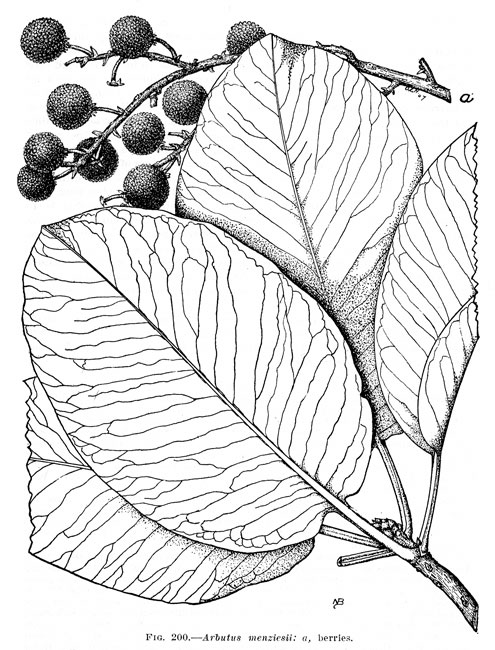Arbutus menziesii
 madroño, madrone
madroño, madrone

Fabled in song and story as a most attractive member of the mixed evergreen forest of the coast ranges, including the Stanford area, the madrone is a rare plant on campus, clearly having disappeared from planting lists. Perhaps this was because of its familiarity in the nearby woods which, of course, have now receded. Yet the live oak has not suffered such neglect, being perhaps the most frequently planted species on campus these days. Ways must be found of establishing madrones and protecting them from disease, especially the soil fungus Phytophthora. (Meanwhile the cultivar ‘Marina’ is considered a horticultural equivalent.) The striking smooth bark darkens in spring to a rich brown and peels in small oblongs, exposing a clear greenish undersurface that soon colors to orange. On older trunks the tessellated bark remains in place and is interesting to feel.
Charming clusters of small, waxy, and white bells appear in spring, and orange berries attract birds in the fall. People may eat the apple-flavored berries too.
From what one sees today in the nearby forests it is surprising to learn that the madrone can exceed 100 feet and has very hard wood, formerly valued for furniture. Today in the Bay Area it is valued as a hot-burning, ash-free firewood, priced accordingly. Three large trees are on the stadium berm facing Galvez Street, opposite Gate 8. A handsome specimen is among shrubbery south of Ventura Hall (left of the driveway). One plant is growing in the California Garden as of 6 May 2006.
Illustrations: Jasper Ridge photos of A. menziesii.
About this Entry: The main text of this entry is from the book Trees of Stanford and Environs, by Ronald Bracewell, published 2005. John Rawlings added the California Garden location.



